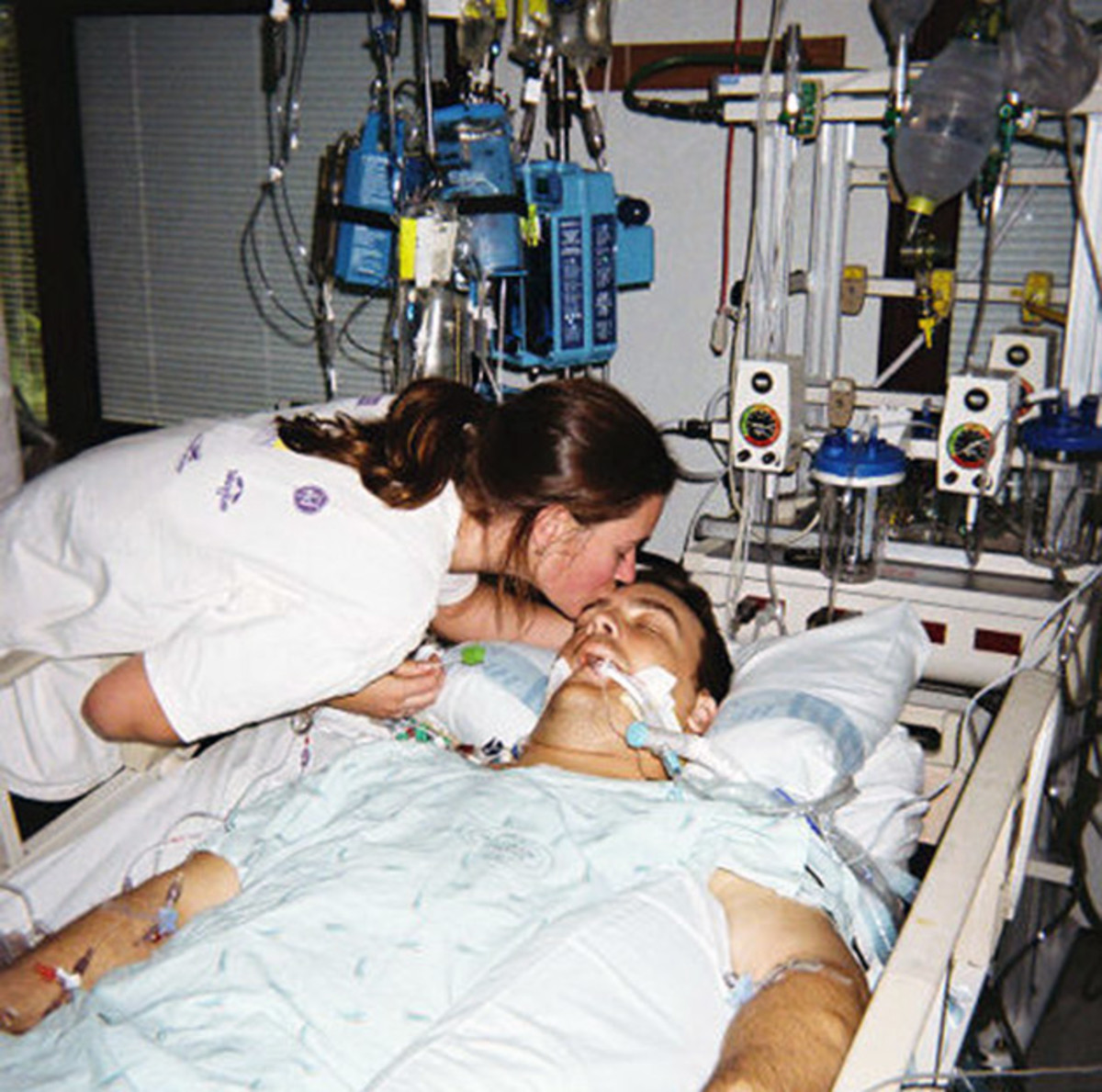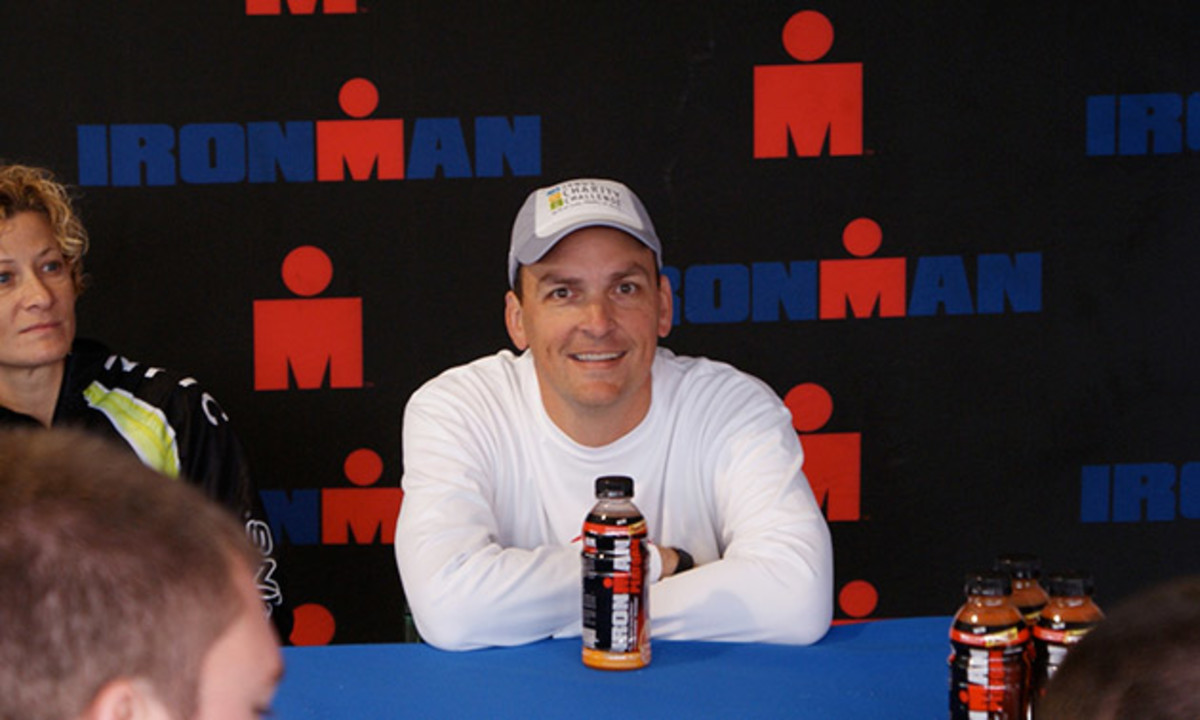Pure Heart: A New Film Follows Cardiac Patients on Their Ironman Quest

In the sporting arena, there's no greater compliment than acknowledging that a competitor has “heart.” These are athletes who care, who are all effort, all the time. But what if the heart—their actual heart—is flawed?
A forthcoming documentary, HEART: Flatline to Finish Line, explores the quandary facing endurance athletes with hearts that have betrayed them. It promises to be a critically important film, given that the odds of any athlete having heart issues are alarmingly high. According to first-time filmmaker David Watkins, an amateur triathlete from Seattle who underwent emergency open-heart surgery in May 2005, one in three people suffer from some form of heart disease. Many don't know it.
"Every year, in every community, we hear it," says Watkins, who suffered from a faulty heart valve and an ascending aortic aneurysm. "We hear of somebody— a very fit person with no known issues—who drops dead of cardiac arrest. All of which can be very likely identified through proper screening."
Watkins' surgery, in his own words, was a "perfect storm" of complications. His heart stopped beating for five minutes, and his family—he is married, with two daughters (now 15 and 12)—was brought in to say their goodbyes. Though surgeons revived him, Watkins suffered a stroke weeks later.
"The last thing I remember thinking [prior to surgery] was, 'What's your legacy for your girls? What footprints have you left for them to follow in?'" he says. "They were so young at the time, but I didn't get an answer. It was a really dark moment, thinking I hadn't left my kids anything to help them lead their lives."
Part of Watkins' recovery plan including setting a goal. He wanted to race an Ironman, a grueling combination of 2.4-mile swim, 112-mile bike ride, and 26.2-mile run. That proclamation led his wife, Kerri, and several of his doctors to question whether Watkins should be seeing a psychiatrist instead of a cardiologist. But Watkins, 35 years old at the time, was resolute.
"This was going to be my way to start leading by example, and teaching my daughters some life lessons along the way," he says. "The first lesson being, no matter what obstacles you're faced with, no matter what others may say, if you work hard and believe in yourself, you can accomplish amazing things. The only way I really knew how to do that was through sport."

Watkins, a Baltimore native, played football and baseball at Division III Elmhurst College near Chicago, where he met his wife. After the pair graduated, Kerri Watkins told her husband, who was a 260-pound offensive lineman: "We have to change what being in shape means for you."
"So she got me running, instead of being bulky, which I certainly was," he says. "I got into running marathons and adventure races, and that soon led into smaller triathlons. I was running a triathlon a few years prior to surgery and collapsed at the finish line. That forced me to go and see my doctor, and he found out I was missing a third of my aorta."
After surgery, Watkins formed Ironheart Racing, which was essentially a race team of one. His doctors acknowledged there wasn't a great deal of available research regarding congenital heart-defect patients participating in endurance sports, but agreed to continue monitoring his progress and constantly re-evaluate his situation.
"The mental fortitude and drive took over at that time, and off I went with this mission, and this vision, of hitting the finish line of an Ironman," says Watkins. "It meant a lot of diagnostics. It meant constant check-ups. And, ultimately, it meant restrictions. I agreed with my cardiologist that I needed to pace myself slowly. I can't get my heart rate up very high, which means I'm not out to win the race. But I can participate. As long as I stay within the parameters that my cardiologist set for me, then I should be OK. And that's what I've been living with since.
"Ultimately, it becomes a matter of this mathematical equation of how far you're going, how long you're going, and how hard you're going," he says. "For me, the 'how hard you're going' needs to be reduced considerably if I'm going to be going long distances for long periods of time."

Watkins delved into social media to connect with other heart patients who were dealing with similar issues, "and the next thing I knew we had 60 people on the Ironheart team." Today, Ironheart Racing has roughly 500 athletes in 46 states and 16 countries. The racing team led to the formation of the Ironheart Foundation (which gained formal non-profit status in 2012). The foundation aims to increase awareness and provide support for heart patients.
"It's a referral system as a way to keep our community heart-smart and heart-safe, through proper use and access to AEDs [Automated External Defibrillators], through proper connection to the right health-care provider, and general support " says Watkins. "What overlies all of that is inspiration. And that's really the awareness that we're doing through the Ironheart Racing Team."
The foundation and racing team were also the impetus for the HEART documentary. "I want this movie to convey what it means to prioritize life to be successful for you," Watkins says. "Given all of the crap that can be thrown at you at any given moment, how are you going to define yourself to do that?"
The images displayed on the Ironheart Foundation web site are jarring: A young woman, her shirt unbuttoned almost to her navel, a long pink scar running along her sternum. Far from gratuitous, the graphic nature of Corinne Ellison's photographs reveals a core belief of Watkins' and his documentary: This is not some Disney tale promising a "happily ever after" ending.
"It's real life. This is what we go through on a day-to-day basis," says Jeremy Woodward, a 36-year-old personal fitness trainer and certified USA Triathlon coach from Concord, N.H. "These are real issues that we're living with and dealing with every day. But we're not letting it set us back, and we're not letting it hold us back."
Woodward, who survived two open-heart surgeries in his 20s, is one of eight competitors Watkins gathered for his HEART documentary, which focuses on the training efforts of Ironheart members leading up to the Ironman Arizona race in 2012. All had documented heart issues, ranging from perforated aortas and valve replacements to Ryan Leong of Hawaii, who suffers from ischemic myocardial contracture, or "stone heart." Some problems, like those of Watkins, Woodward, and Leong, are congenital. Others are the result of lifestyle choices.
MORE: Standing Strong: The Extraordinary Normalcy of Nico Calabria
The documentary, says Watkins, is an unvarnished look at the tribulations that athletes with heart conditions must deal with daily. That became brutally evident in April 2012, when 38-year-old cast member Scott Roy, a veteran triathlon competitor and coach from Spokane, WA, who underwent open-heart surgery in late 2010 to replace a mitral valve, collapsed and died. Roy had become a close friend and confidant of Watkins', and his death nearly scuttled the project.
"The guilt when Scott died was unfathomable," says Watkins. "I felt like I contributed to this, getting Scott out training again, and ultimately his death. I was very close to shutting the whole thing down. It was just complete devastation."
Roy's wife, Tristin, however, insisted that the project go forward, and she took her husband's place. "When Scott passed away, I just felt like it was something I had to finish for him," says Tristin Olson Roy, her voice breaking. "Triathlon was our life. That's what we did almost every day. [Ironman Arizona] was one of the things he so wanted to do, and I couldn't imagine not finishing something that he had started, knowing it meant so much to him."
For obvious reasons, Watkins declines to say how many Ironheart athletes made it to the starting line in Arizona, or how many finished. In hindsight, he says, it doesn't really matter.
"Of all the cast members we had, only a handful of them even made it to race day," says Watkins. "But the story of what we're going through every day and what we're trying to do, and how we live our lives every day, is really what this is about."
Asked if filming the documentary, and participating in triathlons, is a labor of love, Watkins laughs.
"It's a labor," he says. "I'm not built for running. I'm not built for cycling for hours on end. I've had four knee surgeries and two back surgeries, all from football. My body aches. My body is tired. But what the sport gives me is life. It gives me a sense of living, and not being defined by being a congenital heart-defect patient."
HEART: Flatline to Finish Line is now in its final editing phase. Its release date, however, is something of a question mark, pending ongoing fund-raising efforts. Watkins said he hopes to have the documentary completed and released by the end of the year.
